Published Mar 8, 2017
50 Years Later -- The "Devil" Is In The Details
50 Years Later -- The "Devil" Is In The Details
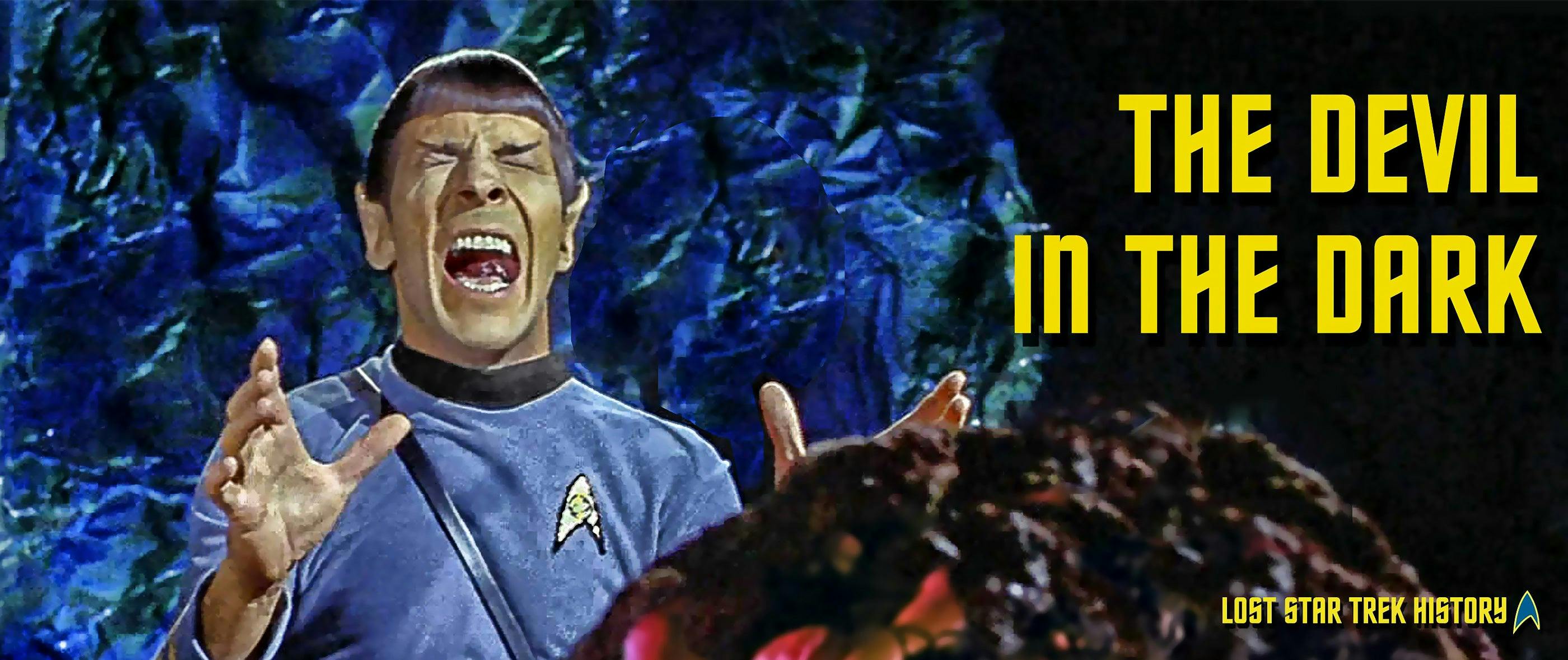
“The Devil in the Dark” was first broadcast on March 9, 1967, and became an instant classic for fans of Star Trek: The Original Series. On the surface, the story told in this episode concerned a very alien mother doing what she could to protect her unborn children from inadvertent destruction at the hands of oblivious humans. At a greater depth, however, “The Devil in the Dark” was really about the dangers of stereotyping and the folly of being afraid of the unknown – two principles that are just as important to remember today as they were back then.
Today is the 50th anniversary of the first television broadcast of the “The Devil in the Dark,” and to commemorate it, we thought we’d unearth some little known and lost nuggets about it. So grab your flashlight… and let’s go prospecting.
Details about the Devil
The alien mother – called a Horta – was played by stuntman and actor Janos Prohaska using a costume that he created. Indeed, it was Prohaska himself who inspired the story for this episode when, reportedly, he crawled into the Star Trek production offices while wearing a version of it and showed it dropping an egg. Writer-Producer Gene L. Coon was so taken with what Prohaska had just done that he was immediately inspired to write “The Devil in the Dark”… so that he could upend its basic trope of the dangerous alien monster.
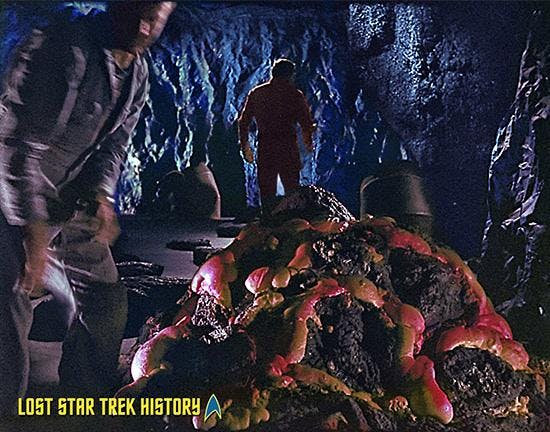
Above: A member of the production crew, on the left, looks into the camera and makes a hasty exit before the Horta attacks the unsuspecting miner, Schmitter (Biff Elliot). This photo comes from a frame of film originally shot for the teaser, i.e., the part of the episode that occurs before the opening credits to lure in the audience. It most likely wound up on the cutting room floor because it showed too much of the creature too early on.
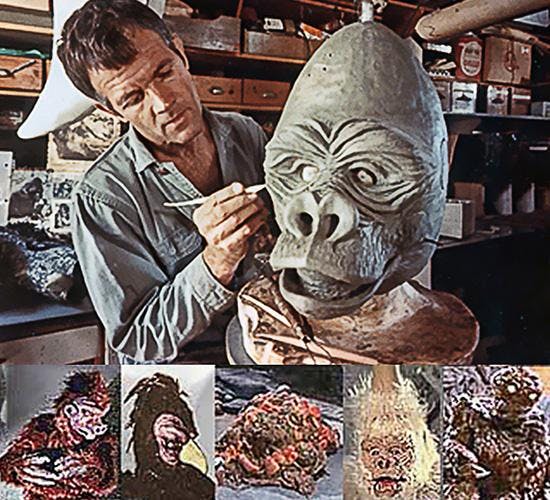
Above: Janos Prohaska, working in his studio in the top picture (courtesy of TV Guide), played many of the creatures in TOS, including an anthropoid ape, a humanoid bird, the Horta, the Mugato and Yarnek.
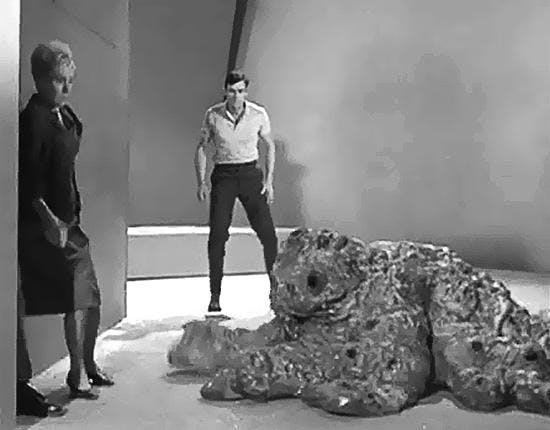
Above: Prohaska’s giant alien microbe from the 1965 Outer Limits episode “The Probe” served as a precursor to the Horta (United Artists Television).

Above: In addition to his creature work in The Outer Limits and Star Trek, Prohaska was also Cookie Bear on The Andy Williams Show (1962-1971). Tragically, Prohaska and his son Robert were killed on March 13, 1974 ,when their chartered airplane crashed near Bishop, California. Prohaska was only 55 years old (Associated Press Wirephoto).
Details about the Dark
Most of the action in “The Devil in the Dark” took place in the subterranean mining colony of Janus VI. Because it was too costly to credibly create such a large, complex expanse on a soundstage, it was rendered on a much smaller scale via a matte painting skillfully crafted by artist Albert Whitlock. Purportedly, Whitlock completed his artwork in about one week.
Unlike many other matte paintings created for TOS, which were designed to be combined with live-action footage, the matte painting of Janus VI was used stand-alone with no live-action elements (not counting the rocks in the foreground and the blinking lights). Additionally, the painting was used in this episode as rear-projection art.

Above: Whitlock’s matte painting of Janus VI was highlighted in the preview for “The Devil in the Dark” that was broadcast after the conclusion of “This Side of Paradise” on March 2, 1967.

Above: A photographic slide of the Janus VI matte painting was rear-projected onto a screen in Vanderberg’s office to serve as the view from his window.
Shooting the Devil
Very often, the production of TOS raced against the clock to complete episodes and meet airdates, especially in the first season. And, despite Robert Justman’s meticulous planning, the targeted seven-day shooting schedule for each of the episodes often ran longer. For “The Devil in the Dark,” the production company actually tried to get ahead of the curve and started principal photography on a Sunday, as the date on the slate in the below film frame shows.
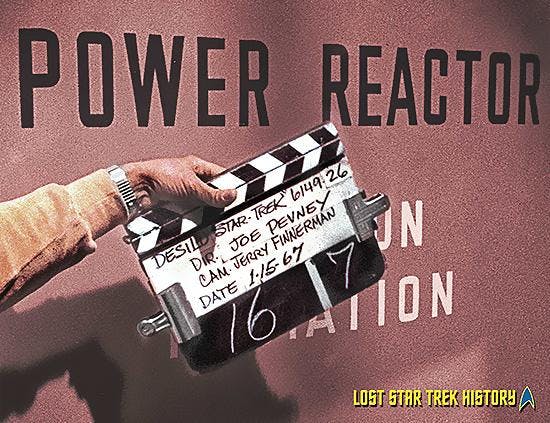
Unfortunately, as many fans know, the shooting schedule for this episode was rendered obsolete when William Shatner’s father, Joseph, passed away on January 17, 1967, and Shatner needed to leave for the funeral.
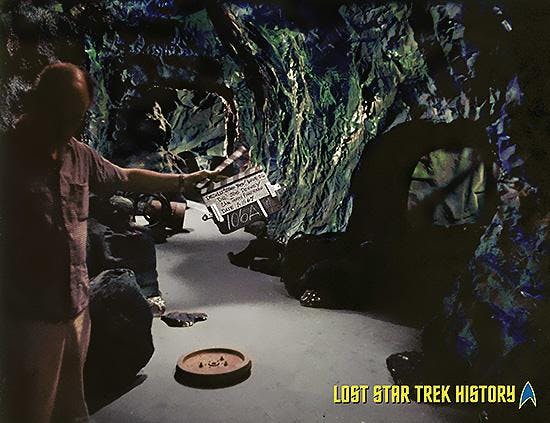
Above: In an attempt to keep the production on schedule, miscellaneous shots that didn’t involve Shatner, e.g., those involving the Horta, the tunnels, etc., were filmed after he departed, starting on January 18. Additionally, where possible, a body double was used for Shatner and photographed from behind.
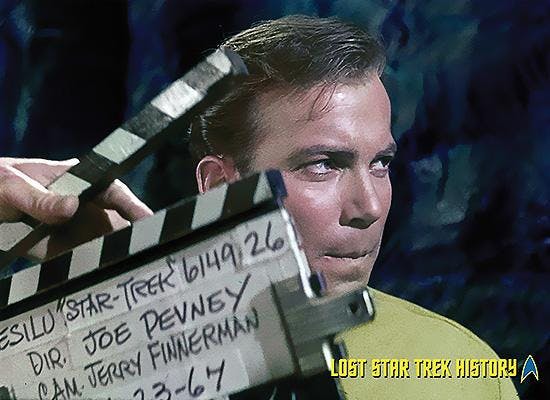
Above: Shatner was back on the set on January 23 and resumed filming his scenes. Any reverse angles that were needed to go with the body double footage shot in his absence were also filmed.
The Horta Eavesdrops – A Deleted Scene
Every episode of TOS had one or more scenes that were deleted or trimmed as they were being assembled, and “The Devil in the Dark” was no exception. One of the scenes that was removed from it – from the middle of Act III, in particular – showed the Horta spying on Kirk as he was talking to the miners.
To set the stage for this deleted scene, shown below, Kirk had told Vanderberg to assemble his men on level 23 so that he could meet with them to get them started searching for the Horta. After they had assembled, Kirk gave them their orders while pacing back and forth; Spock stood strangely quiet and pensive in the background. We learned later from dialogue from Spock that the reason he had been quiet and detached while Kirk talked was that he had been sensing the Horta secretly watching them, even though they – and we, the home viewers – had not seen it. As scripted and filmed, however, but cut from the episode, the Horta’s silent eavesdropping had been shown.
The below is the deleted scene, and it’s been recreated by pairing a photo of a film frame from the lost footage with the scene description from the shooting draft of the script (in italics).
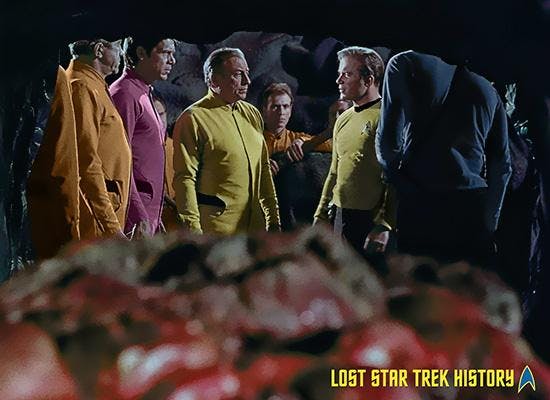
LOW ANGLE SHOT – LOOKING UP AT KIRK AND HIS MEN
As if from within one of those fused tunnels. Kirk is talking, giving orders, pointing out directions… obviously the man in command. CAMERA PULLS BACK SLIGHTLY AS HE TALKS, AND WE SEE, below camera, the shaggy shape of the creature. It seems to be watching and listening.
And with that, we’re done. We hope you’ve enjoyed this article that’s… drilled down… on one of TOS’s very best episodes. Until next time.
David Tilotta is a professor at North Carolina State University in Raleigh, NC and works in the areas of chemistry and sustainable materials technology. You can email David at david.tilotta@frontier.com. Curt McAloney is an accomplished graphic artist with extensive experience in multimedia, Internet and print design. He resides in a suburb of the Twin Cities in Minnesota, and can be contacted at curt@curtsmedia.com. Together, Curt and David work on startrekhistory.com. Their Star Trek work has appeared in the Star Trek Magazine and Star Trek: The Original Series 365 by Paula M. Block with Terry J. Edrmann.
